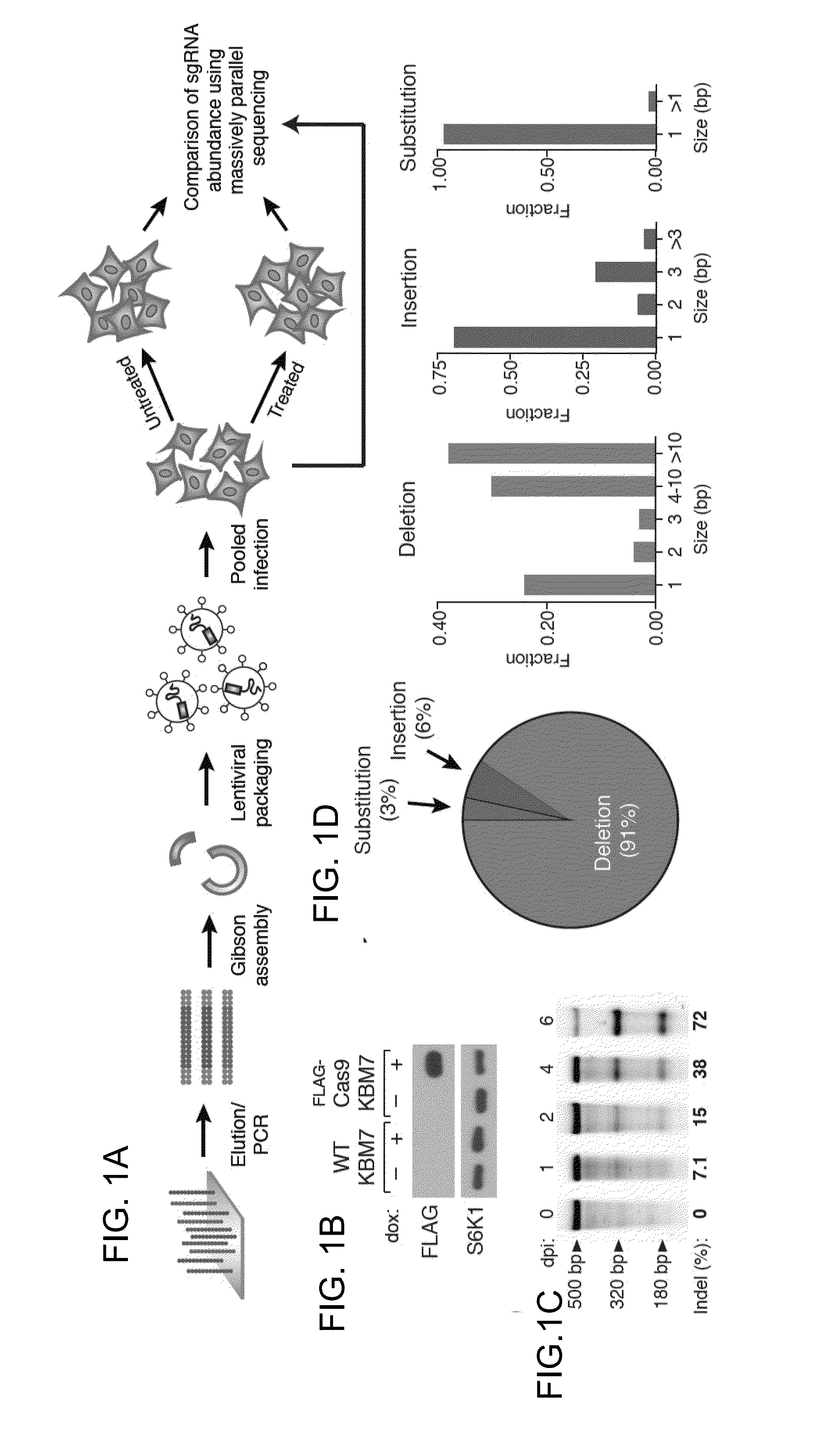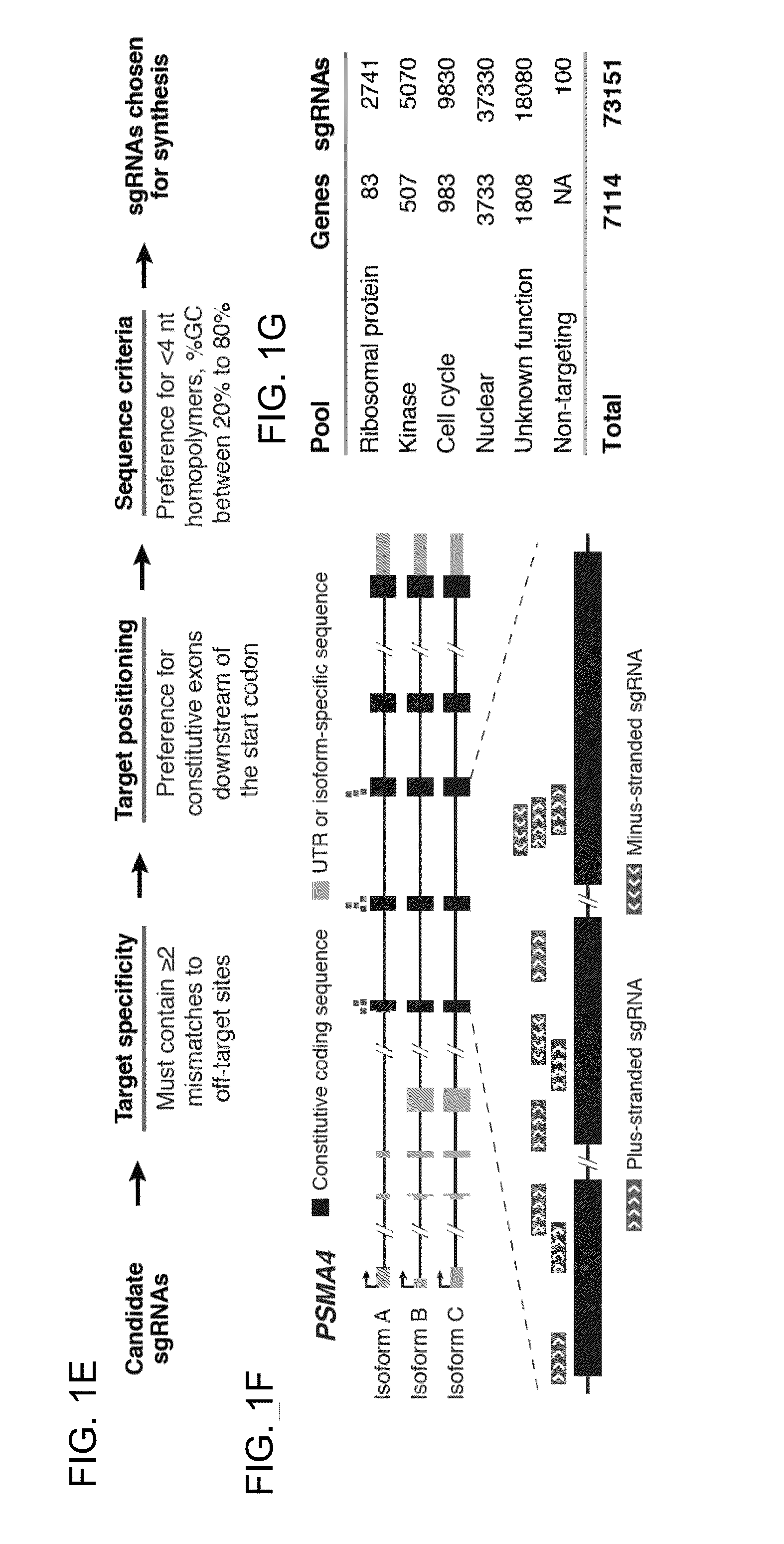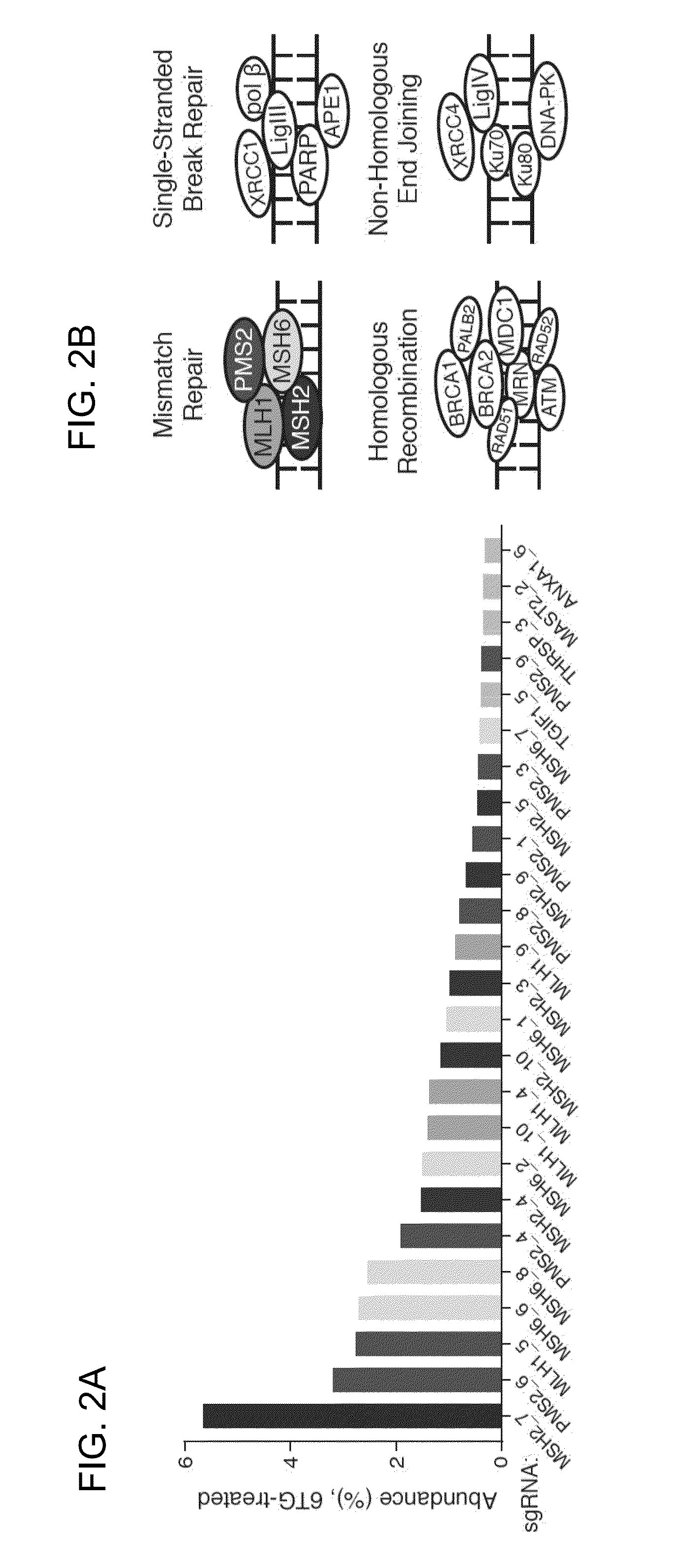Functional genomics using crispr-cas systems, compositions, methods, screens and applications thereof
a functional genomic and crispr-cas technology, applied in the direction of biochemistry apparatus and processes, stable introduction of dna, screening process, etc., can solve the problems of limiting spatial control, using shrnas for functional genomic screening that are not advantageous, etc., to accelerate the ability to catalog and map, and simplify the methodology
- Summary
- Abstract
- Description
- Claims
- Application Information
AI Technical Summary
Benefits of technology
Problems solved by technology
Method used
Image
Examples
example 1
Genetic Screens in Human Cells Using the CRISPR / Cas9 System
[0154]The bacterial CRISPR-Cas9 system for genome editing has greatly expanded the toolbox for mammalian genetics, enabling the rapid generation of isogenic cell lines and mice with modified alleles. Here, Applicants described a pooled, loss-of-function genetic screening approach suitable for both positive and negative selection that uses a genome-scale lentiviral single guide RNA (sgRNA) library. sgRNA expression cassettes were stably integrated into the genome, which enabled a complex mutant pool to be tracked by massively parallel sequencing. Applicants used a library containing 73,000 sgRNAs to generate knockout collections and performed screens in two human cell lines. A screen for resistance to the nucleotide analog 6-thioguanine identified all expected members of the DNA mismatch repair pathway, while another for the DNA topoisomerase II (TOP2A) poison etoposide identified TOP2A, as expected, and also cyclin-dependent...
example 2
Features Underlying sgRNA Potency
[0171]Applicants sought to understand the features underlying sgRNA potency. Although the vast majority of sgRNAs against ribosomal protein genes showed depletion, detailed comparison of sgRNAs targeting the same gene revealed substantial variation in the precise amounts of depletion. These differences are unlikely to be caused by local accessibility to the Cas9 / sgRNA complex inasmuch as comparable variability was observed even among sgRNAs targeting neighboring target sites of a given gene (FIG. 7). Given that Applicants' library includes all possible sgRNAs against each of the 84 ribosomal genes, the data allowed Applicants to search for factors that might explain the differential efficacy of sgRNAs. Because the majority of ribosomal proteins genes are essential, Applicants reasoned that the level of depletion of a given ribosomal protein-targeting sgRNA could serve as a proxy for its cleavage efficiency. Applying this approach, Applicants found se...
example 3
Confirmation of Approach
[0179]Although Applicants investigations relate to proliferation-based phenotypes, Applicants' approach can be applied to a much wider range of biological phenomena. With appropriate sgRNA libraries, the method should enable genetic analyses of mammalian cells to be conducted with a degree of rigor and completeness currently possible only in the study of microorganisms.
[0180]Methods and Materials
[0181]Cell lines and vectors: Materials were obtained from the following sources: HL-60 were kindly provided from the Whitehead Institute, Cambridge, Mass., USA; pCW57.1 Dox-inducible lentiviral vector, pX330-U6-Chimeric_BB-CBh-hSpCas9 vector, pLX304 lentiviral vector, and gRNA_AAVS1-T2 vector from Addgene.
[0182]Cell culture: Unless otherwise specified, 293T cells were cultured in DMEM (US Biological) and supplemented with 20% Inactivated Fetal Calf Serum (Sigma), 5 mM glutamine, and penicillin / streptomycin. HL60 and KBM7 cells were cultured in IMDM (Life Technologies...
PUM
| Property | Measurement | Unit |
|---|---|---|
| pH | aaaaa | aaaaa |
| pressure | aaaaa | aaaaa |
| selective pressure | aaaaa | aaaaa |
Abstract
Description
Claims
Application Information
 Login to View More
Login to View More - R&D
- Intellectual Property
- Life Sciences
- Materials
- Tech Scout
- Unparalleled Data Quality
- Higher Quality Content
- 60% Fewer Hallucinations
Browse by: Latest US Patents, China's latest patents, Technical Efficacy Thesaurus, Application Domain, Technology Topic, Popular Technical Reports.
© 2025 PatSnap. All rights reserved.Legal|Privacy policy|Modern Slavery Act Transparency Statement|Sitemap|About US| Contact US: help@patsnap.com



